Nico Schlapps from Pink Cloud shared with us their proposal for Flip/City, a city that proposes a new urban identity for Shanghai as a model for the development of future cities.

Courtesy of PinkCloud.DK
By questioning traditional typologies, FLIP/CITY redefines methods of organizing communities by preserving the human scale. The proposal flips the horizontal cityscape to the vertical. Footprints of Shanghai’s existing typologies, only visible by plane, embody the new face of the vertical city. By expressing distinct functions for its citizens, FLIP/CITY relates strongly to the human scale while simultaneously increasing density and green space at the urban scale.
By expanding Shanghai up along the vertical plane unused urban voids will be activated. Proximity and numerous informal meeting spaces catalyze synergy and a vivid community life. FLIP/CITY is a new urban typology that answers the needs of modern Shanghai, its economy, social structures and ecological plans for the future while embracing Shanghai’s rich history and its citizens.
 VISION
VISIONImagine a city of a unique new typology that meets the needs of its inhabitants while maximizing the quality of life and work. This typology would embrace communities and their citizens as a flexible framework which adapts to environmental and economic changes. As a reactive healing force, this city could renew weak urban zones in decline by filling voids and dead space with functioning, thriving neighborhoods. Most importantly, this new typology would have the capacity to maximize green space and solve infrastructural issues while creating an efficient, accessible circulation system for public transit.
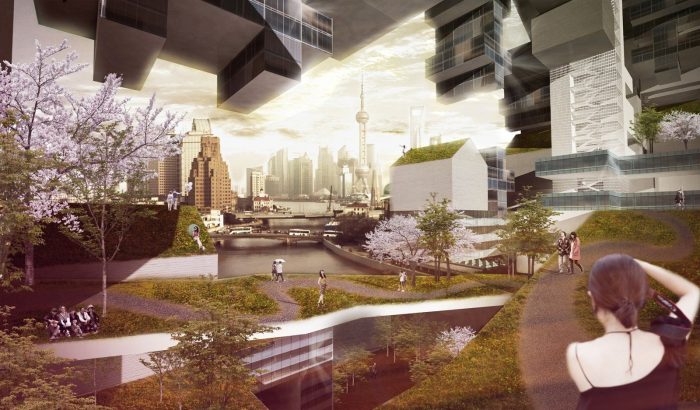
Courtesy of PinkCloud.DK
 CONCEPT
CONCEPTFLIP/CITY realizes this urban typology in the context of Shanghai, a prime location for sustainable innovation at an immense scale. Shanghai faces problems incurred by high population density, heavy pollution, rapid growth, and decreasing viable land.
FLIP/CITY challenges these issues by transforming the orientation of Shanghai’s city grid. The proposal flips the cityscape from the horizontal plane to the vertical plane, thereby generating a new typology. In this model, the footprints of Shanghai’s existing typologies, only visible on maps or by plane, embody the new face of the vertical city. By literally expressing distinct functions for its citizens, FLIP/CITY relates strongly to the human scale while simultaneously increasing density and green space at the urban scale.
WHY?
Shanghai’s exponential population growth was incurred by its international importance as a financial epicenter. This population boom lead to the import of Western urban typologies in Shanghai. While the high-rise typology effectively challenges high density with a small footprint, it is typically plagued with a homogeneous function. This contributes to the issue of exclusivity of the city center as a commercial zone. City centers often resemble the financial hub of the city, gradually extending into residential sprawl. This necessitates more transportation infrastructure to bridge long distances between office and residence. High-rise typologies also lose the intimacy of the human scale, forcing citizens to live and work in increasingly alienating, pollutive, and disconnected environments.
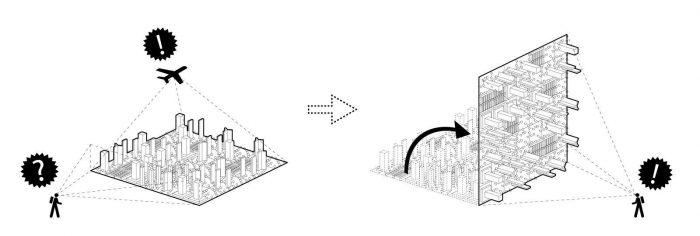
diagram 10
-

-
Courtesy of PinkCloud.DK
-
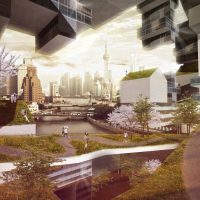
-
Courtesy of PinkCloud.DK
-

-
Courtesy of PinkCloud.DK
-

-
Courtesy of PinkCloud.DK
-
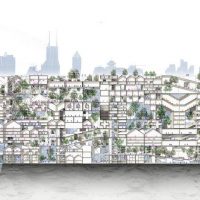
-
section
-
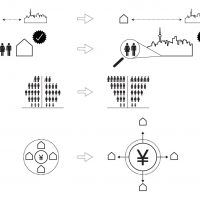
-
diagram 1
-
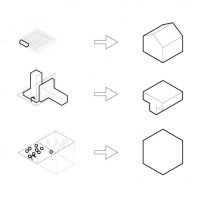
-
diagram 2
-
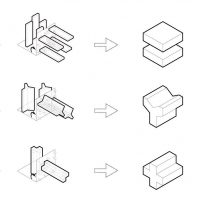
-
diagram 3
-
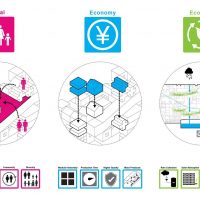
-
diagram 4
-
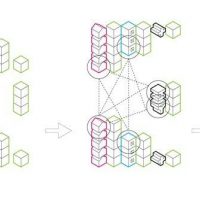
-
diagram 5
-
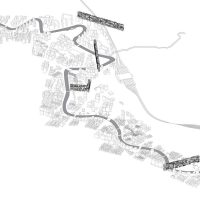
-
diagram 6
-
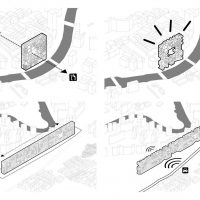
-
diagram 07
-
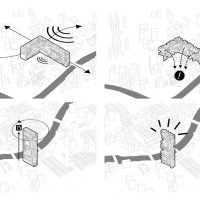
-
diagram 08
-
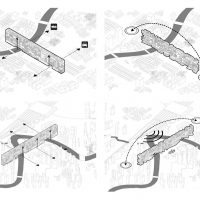
-
diagram 09
-
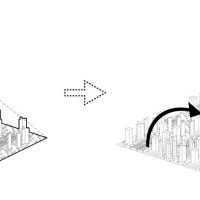
-
diagram 10

























